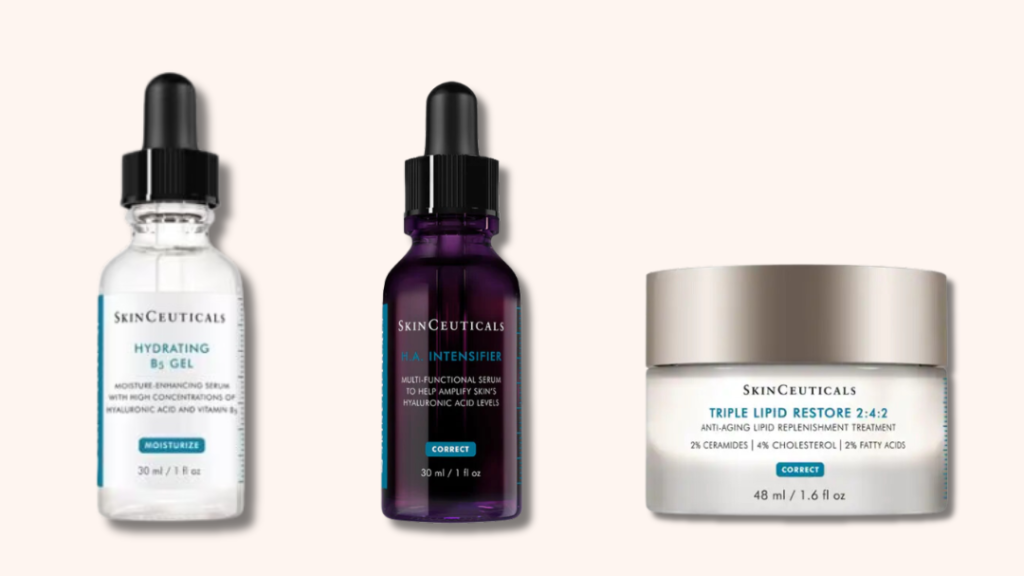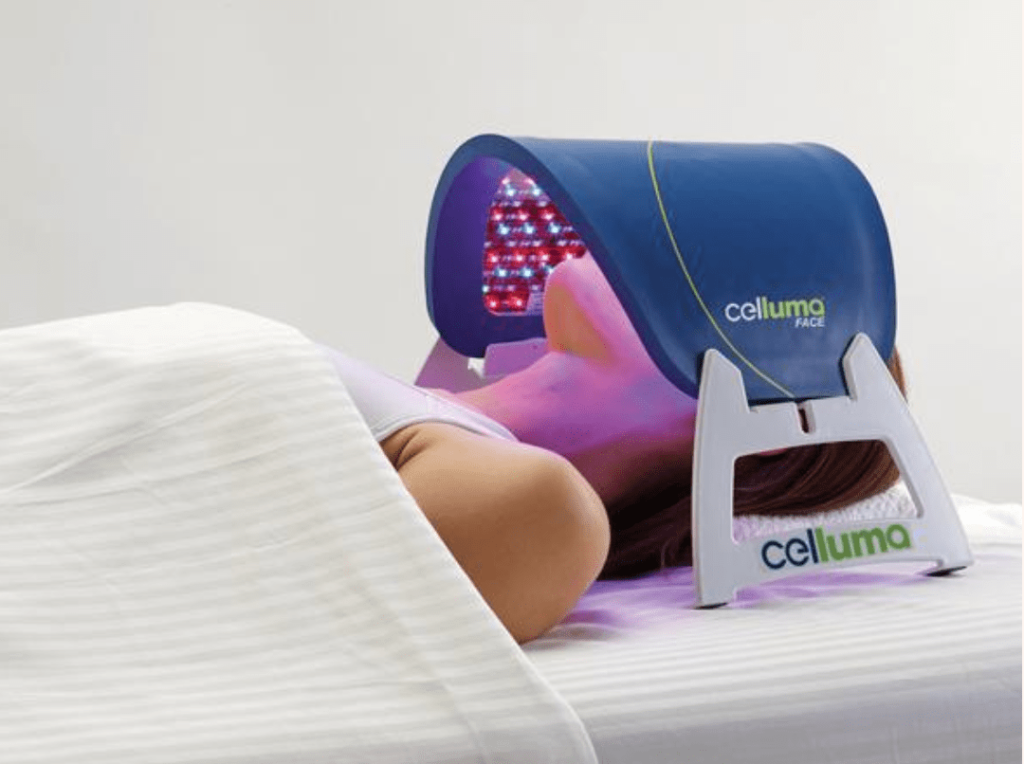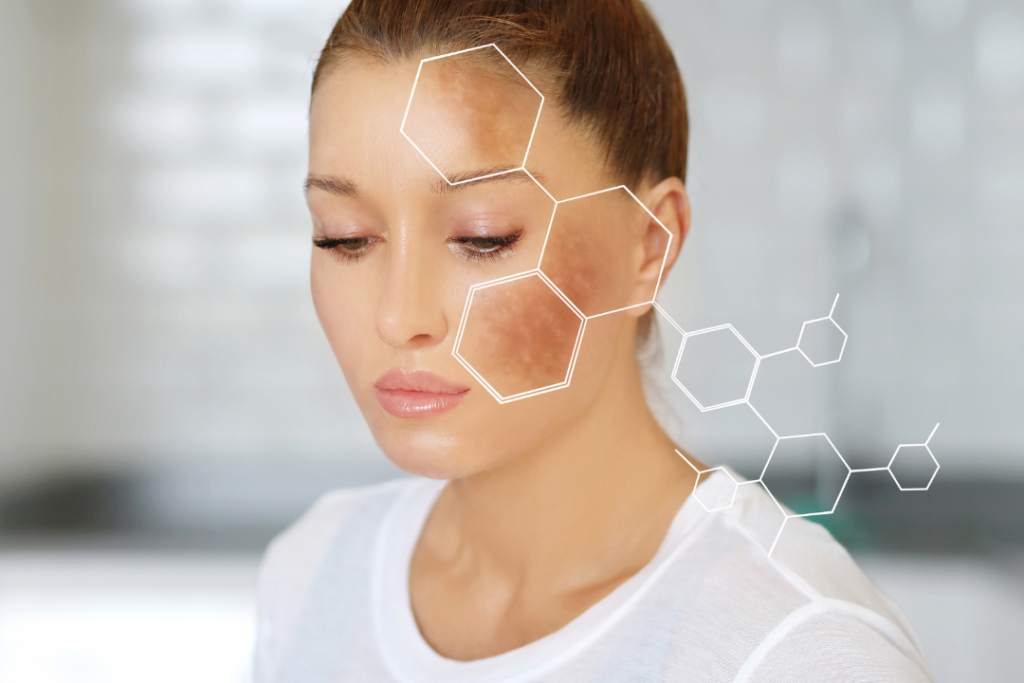hyperpigmentation
Our skin is often exposed to the cold and dry air from indoor heating and blustery winds during winter. The drop in temperature can lead to dryness, flaky and dull skin. At Cavendish Clinic, we’ve crafted the perfect winter skincare regime that combines the power of moisture, hydration, and cutting-edge technology with our Celluma LED Light Therapy to leave your skin looking and feeling healthy and radiant all season long.
Moisture: The Key to Winter Skin Bliss
The first step in achieving the perfect winter skin is to combat dryness with intense moisture. Start with an effective moisturising routine. Our skincare experts recommend incorporating a hydrating cleanser and a rich, nourishing moisturiser to replenish dehydrated skin and help create a protective barrier against blustery winds.
Hydration: Skincare With Helpful Ingredients
During the winter it’s important to stay hydrated as dry indoor heating increases the water you lose through your skin daily. We advise increasing your water intake and incorporating certain ingredients such as hyaluronic acid into your skincare routine. Hyaluronic acid acts like a moisture magnet, attracting and retaining water for plump, supple skin.
SkinCeuticals has a range of products that will give your skin the support it needs during the wintertime:
- The Hydrating B5 oil-free serum is enriched with vitamin B5 and hyaluronic acid replenishes essential nutrients which helps the skin to feel supple and smooth.
- The H.A. Intensifier Serum is a multi-functional serum proven to amplify and maintain the skin’s hyaluronic acid levels to help restore the natural appearance of plumpness, smoothness, and firmness.
- The Triple Lipid Restore 2:4:2 is a corrective moisturiser that restores essential skin lipids, improves the skin’s texture and promotes radiance.

Celluma LED Light Therapy: Illuminating Your Winter Skincare Routine
Celluma LED Light Therapy is a non-invasive treatment that harnesses the power of light to promote skin rejuvenation. This FDA-cleared LED device stimulates cellular activity, accelerates healing, and boosts collagen production. In the winter months, when our skin needs extra support, it helps reduce redness, soothe inflammation, and enhance the overall health of your skin.
Incorporating Celluma into Your Skincare Routine
During your facial, enjoy the relaxation of the Celluma device as it is gently placed over your face. The LED light wavelengths help to promote collagen production, reduce inflammation, and enhance skin vitality. Relax and enjoy the gentle warmth and soothing light, creating a spa-like experience. The Celluma device is suitable for all skin types and requires no downtime – you can easily incorporate it into your regular skincare routine.

Our skincare experts at Cavendish Clinic may recommend a series of Celluma sessions over several weeks to maximise the benefits. Consistency is key and regular treatments can lead to long-lasting improvements in skin tone and texture. During December clients can buy any course or package and receive unlimited Celluma LED Light Therapy*. Once purchased, it’s automatically credited to your account. Book anytime online, choose the location and select category promotions, subject to availability.
*T&Cs apply.
Latest Tips and Insights by Cavendish Clinic
Hyperpigmentation is a skin condition that affects millions of people worldwide, and it can be frustrating to deal with. Whether it’s sunspots, melasma, acne scars, or age spots, hyperpigmentation can take a toll on your confidence and overall skin health. Let’s explore the latest tips and insights for understanding, preventing, and treating hyperpigmentation effectively.
What Is Hyperpigmentation?
Hyperpigmentation occurs when certain areas of the skin become darker in color than the surrounding skin. This happens due to an overproduction of melanin, the pigment responsible for skin, hair, and eye color. There are several common types of hyperpigmentation, including:
- Sunspots: These are caused by prolonged sun exposure and can appear as small, dark spots on the skin.
- Melasma: Often triggered by hormonal changes, melasma leads to brown or grayish patches on the face, particularly in women.
- Post-Inflammatory Hyperpigmentation (PIH): PIH occurs after skin inflammation, such as acne or a rash, and leaves behind dark marks.

Latest Tips and Insights:
1. Sunscreen is Your Best Friend:
One of the most crucial steps in preventing and treating hyperpigmentation is consistent sun protection. The sun’s UV rays can exacerbate existing hyperpigmentation and trigger new spots. Use a broad-spectrum sunscreen with SPF 30 or higher daily, even on cloudy days.
We recommend SkinCeuticals Mineral Matte UV Defense SPF 30 30ml & Skin Blue Filter
2. Topical Brightening Agents:
Incorporate skincare products containing ingredients like vitamin C, niacinamide, and alpha hydroxy acids (AHAs) into your routine. These ingredients can help fade existing pigmentation and prevent new spots from forming.
We recommend Defense Discolouration Serum & Skin Even IQ
3. Professional Treatments:
Consult with a dermatologist for advanced treatments like chemical peels, laser therapy, microdermabrasion, or prescription-strength topical medications. These can be highly effective for stubborn hyperpigmentation.
See a full list of our treatments here
4. Stay Consistent:
Treating hyperpigmentation takes time and consistency. Be patient and adhere to your skincare routine diligently to see noticeable improvements. We always recommend a twelve-12 plan, and then analyse your results.
5. Address Hormonal Triggers:
If you have melasma, consult with a healthcare provider to address any underlying hormonal issues that may be contributing to your pigmentation concerns.
6. Avoid Picking and Squeezing:
Resist the urge to pick at your skin or pop pimples, as this can worsen hyperpigmentation and lead to PIH.
7. Dietary Considerations:
Some studies suggest that a diet rich in antioxidants and omega-3 fatty acids may help promote healthy skin and reduce hyperpigmentation. Incorporate foods like berries, fish, and leafy greens into your diet.
We can’t recommend enough: Skin Even IQ
Dr’s Conclusion:

Hyperpigmentation can be a challenging skin concern, but with the latest tips and insights, you can effectively manage and treat it. Remember that everyone’s skin is unique, so it may take some trial and error to find the best approach for your individual needs. Consulting with a dermatologist is always a wise step in your journey to achieving clear, even-toned skin.
By following these latest tips and staying informed about the best skincare practices, you can regain your confidence and enjoy a more radiant complexion.
Our committed support to you:
If you would like to book a free consultation with one of our doctors, please send us an email here and we will book it for you.